Abstract
The main objective was to assess the influence of the seasonal stratospheric ozone depletion on the UV climate in Antarctica by using a biological test system. This method is based on the UV sensitivity of a DNA repair-deficient strain of Bacillus subtilis (TKJ 6321). In our field experiment, dried layers of B. subtilis spores on quartz discs were exposed in different seasons in an exposure box open to solar radiation at the German Antarctic Georg von Neumayer Station (70°37′S, 8°22′W). The UV-induced loss of the colony-forming ability was chosen as the biological end point and taken as a measure for the absorbed biologically harmful UV radiation. Inactivation constants were calculated from the resulting dose-response curves. The results of field experiments performed in different seasons indicate a strongly season-dependent trend of the daily UV-B level. Exposures performed at extremely depleted ozone concentrations (October 1990) gave higher biologically harmful UV-B levels than expected from the calculated season-dependent trend, which was determined at normal ozone values. These values were similar to values which were measured during the Antarctic summer, indicating that the depleted ozone column thickness has an extreme influence on the biologically harmful UV climate on ground.
Full text
PDF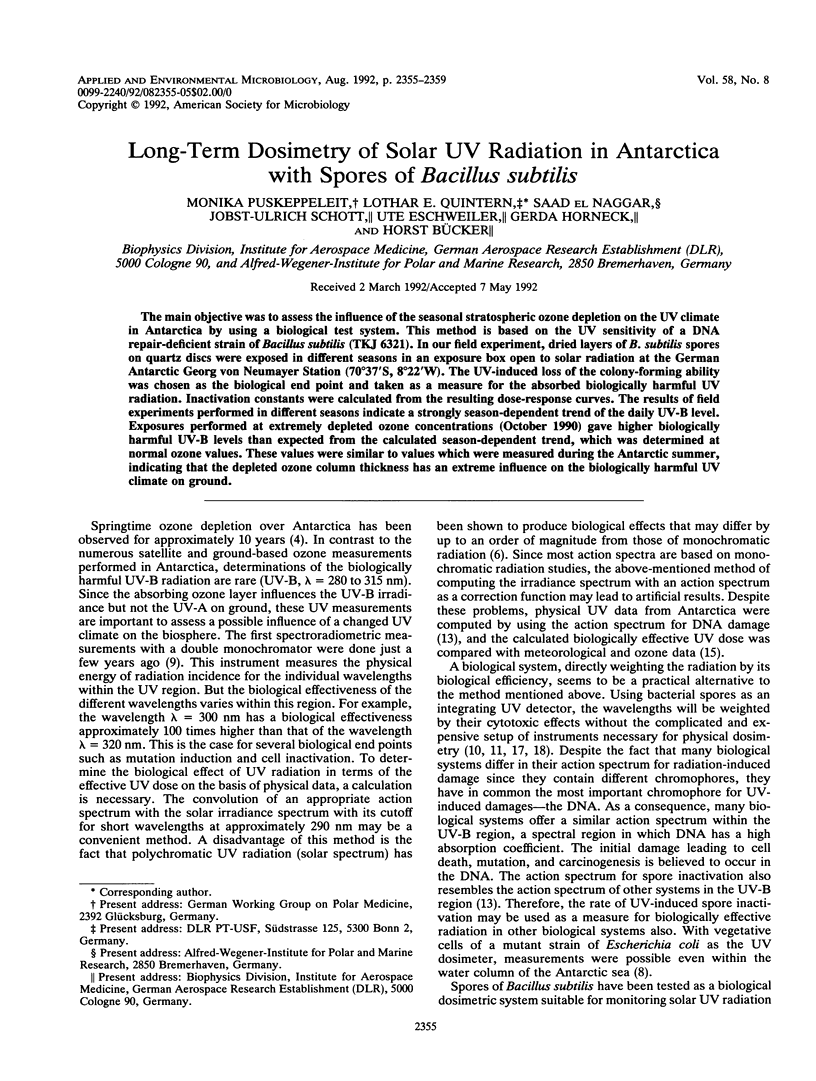
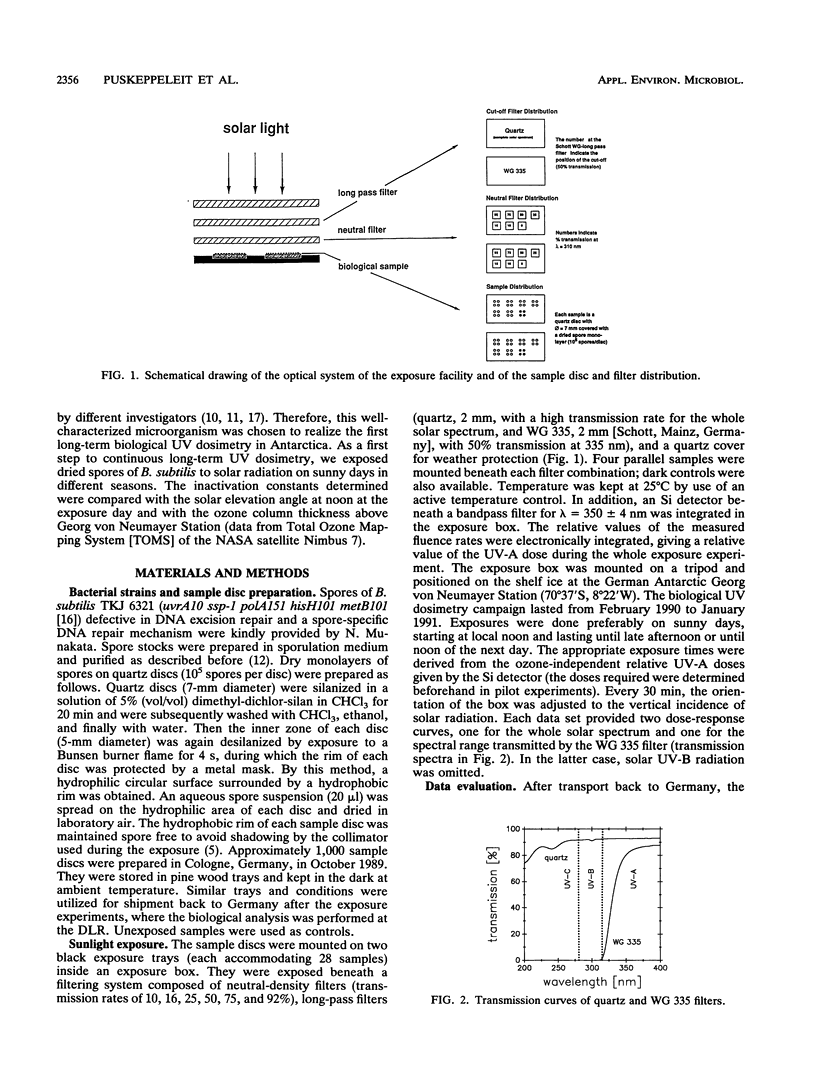
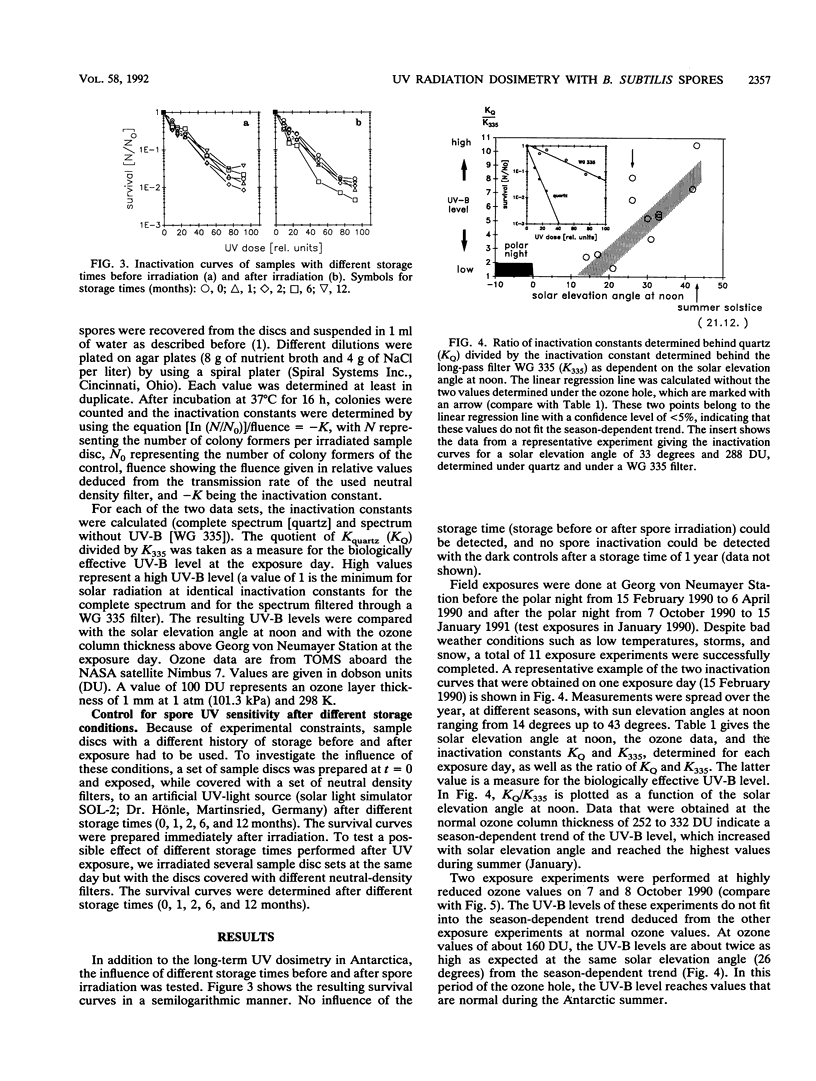
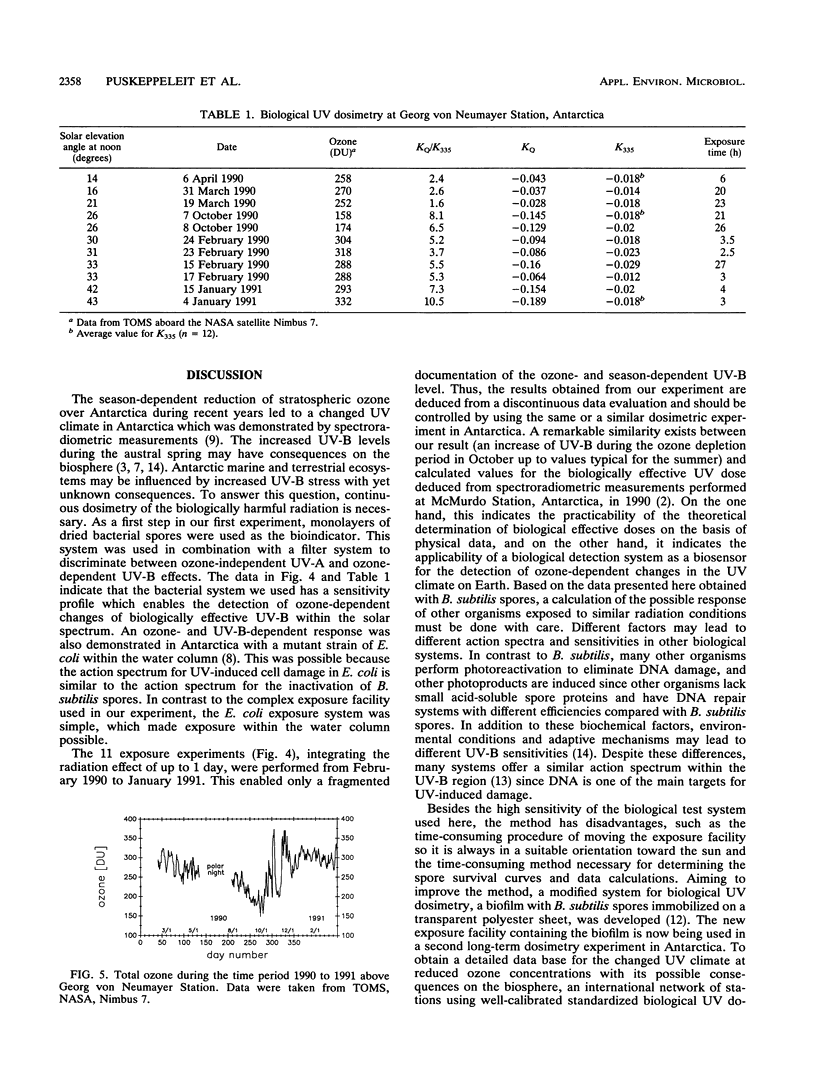
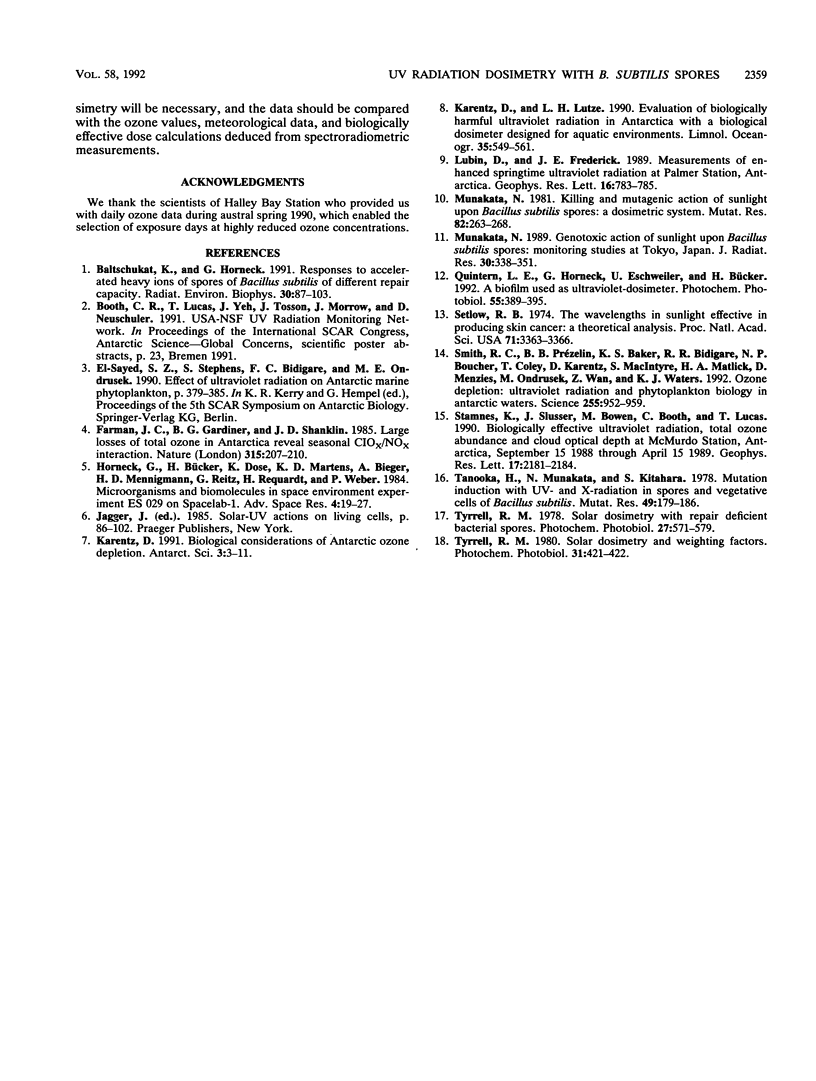
Selected References
These references are in PubMed. This may not be the complete list of references from this article.
- Baltschukat K., Horneck G. Responses to accelerated heavy ions of spores of Bacillus subtilis of different repair capacity. Radiat Environ Biophys. 1991;30(2):87–103. doi: 10.1007/BF01219343. [DOI] [PubMed] [Google Scholar]
- Horneck G., Bucker H., Dose K., Martens K. D., Bieger A., Mennigmann H. D., Reitz G., Requardt H., Weber P. Microorganisms and biomolecules in space environment experiment ES 029 on Spacelab-1. Adv Space Res. 1984;4(10):19–27. doi: 10.1016/0273-1177(84)90220-5. [DOI] [PubMed] [Google Scholar]
- Munakata N. Genotoxic action of sunlight upon Bacillus subtilis spores: monitoring studies at Tokyo, Japan. J Radiat Res. 1989 Dec;30(4):338–351. doi: 10.1269/jrr.30.338. [DOI] [PubMed] [Google Scholar]
- Munakata N. Killing and mutagenic action of sunlight upon Bacillus subtilis spores: a dosimetric system. Mutat Res. 1981 Jul;82(2):263–268. doi: 10.1016/0027-5107(81)90155-x. [DOI] [PubMed] [Google Scholar]
- Setlow R. B. The wavelengths in sunlight effective in producing skin cancer: a theoretical analysis. Proc Natl Acad Sci U S A. 1974 Sep;71(9):3363–3366. doi: 10.1073/pnas.71.9.3363. [DOI] [PMC free article] [PubMed] [Google Scholar]
- Smith R. C., Prézelin B. B., Baker K. S., Bidigare R. R., Boucher N. P., Coley T., Karentz D., MacIntyre S., Matlick H. A., Menzies D. Ozone depletion: ultraviolet radiation and phytoplankton biology in antarctic waters. Science. 1992 Feb 21;255(5047):952–959. doi: 10.1126/science.1546292. [DOI] [PubMed] [Google Scholar]
- Tanooka H., Munakata N., Kitahara S. Mutation induction with UV- and X-radiations in spores and vegetative cells of Bacillus subtilis. Mutat Res. 1978 Feb;49(2):179–186. doi: 10.1016/0027-5107(78)90155-0. [DOI] [PubMed] [Google Scholar]
- Tyrrell R. M. Solar dosimetry with repair deficient bacterial spores: action spectra, photoproduct measurements and a comparison with other biological systems. Photochem Photobiol. 1978 May;27(5):571–579. doi: 10.1111/j.1751-1097.1978.tb07648.x. [DOI] [PubMed] [Google Scholar]


